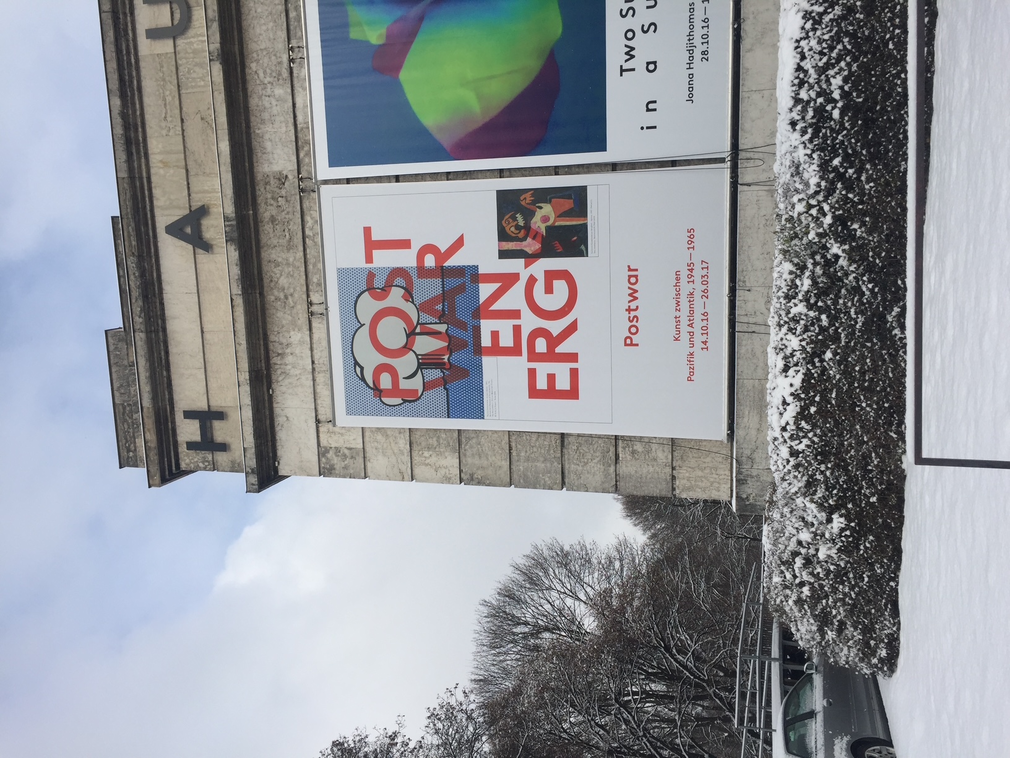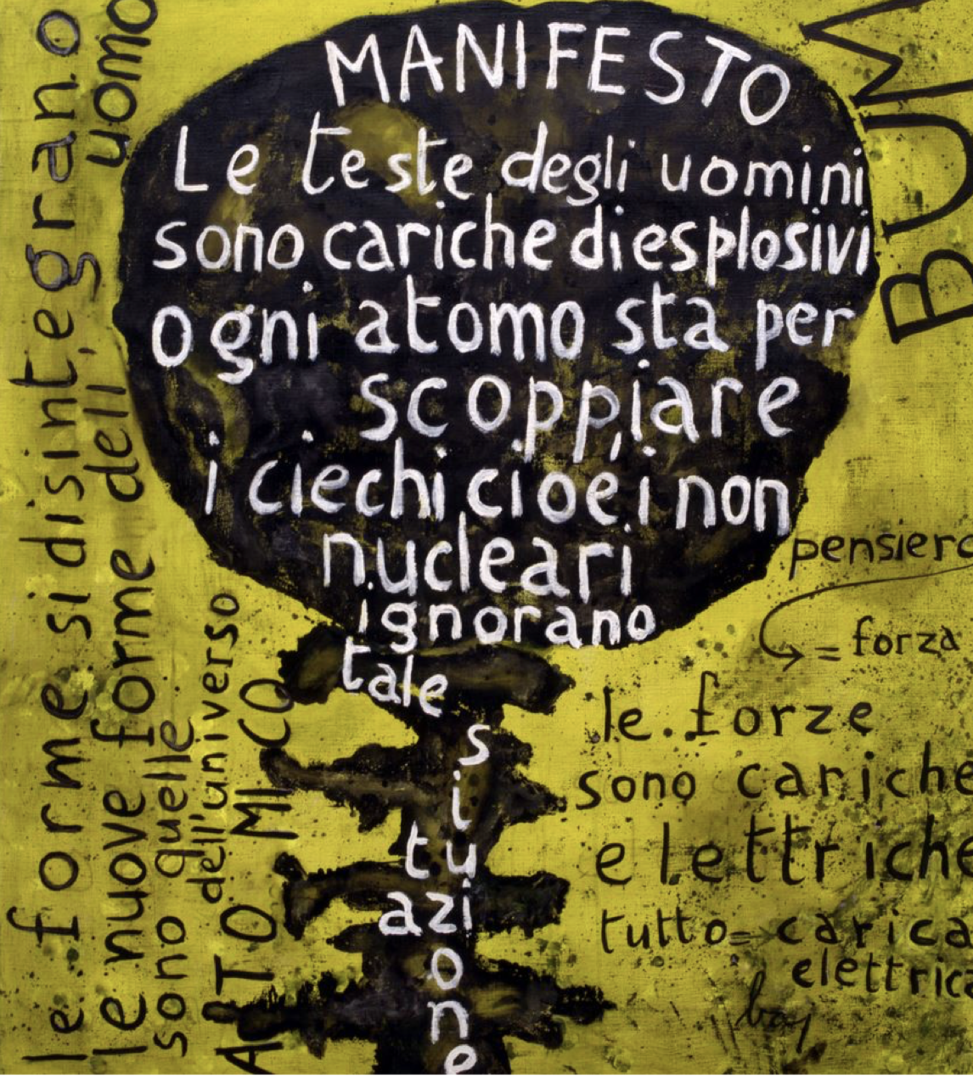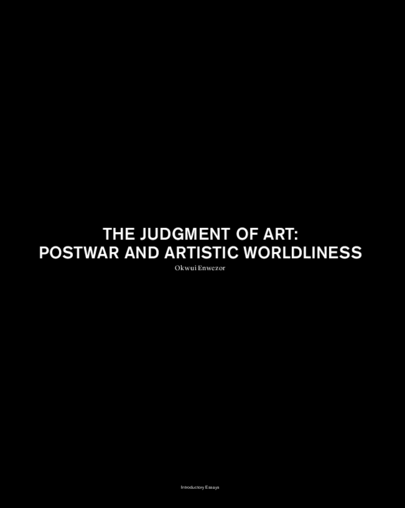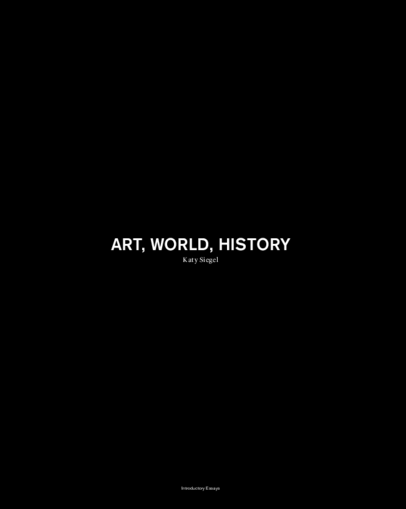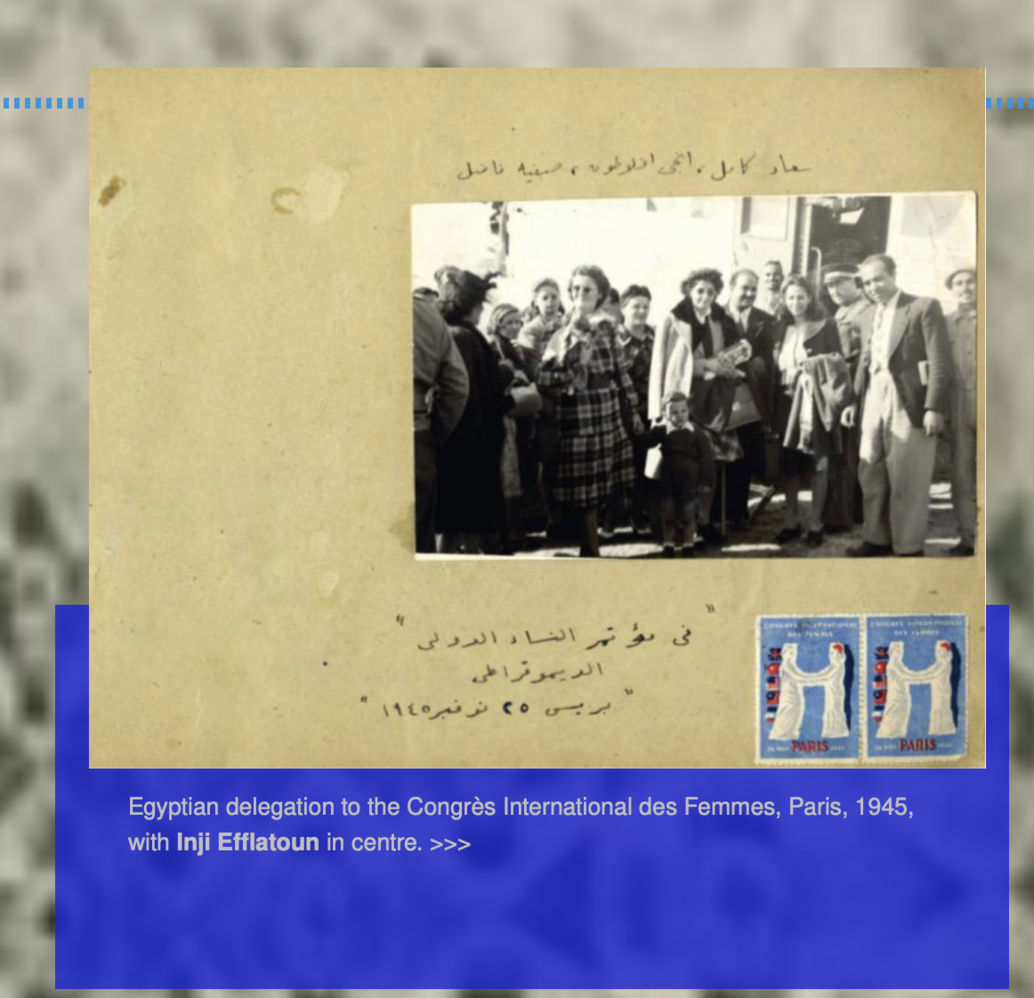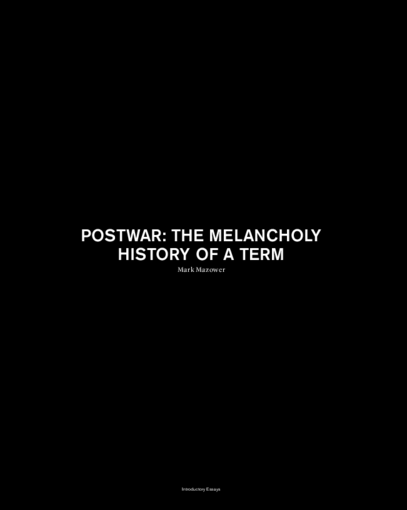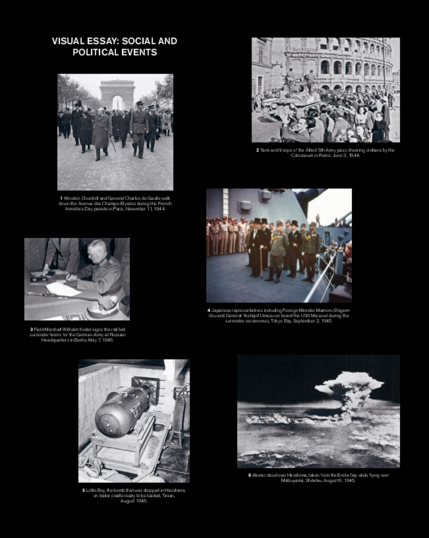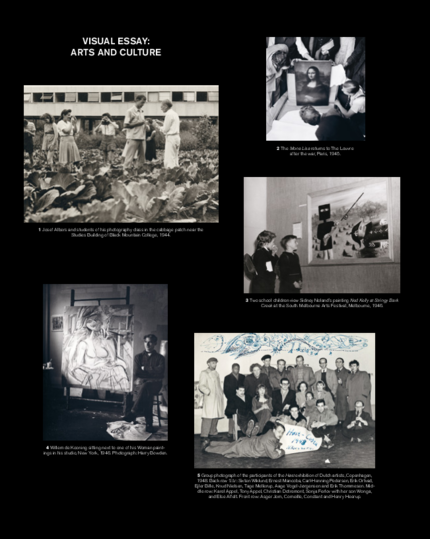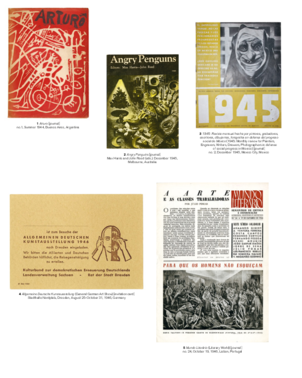Exhibition: Postwar—Art Between the Pacific and the Atlantic 1945-1965
A selection of introductory texts and visual essays
Exorcizing the Atomic Bomb Through the Arts in Italy: From Eaismo to Senzatomica—Massimo Introvigne
The success of anti-nuclear-weapon campaigns such as those promoted by Senzatomica in Italy may owe something to a post-Hiroshima artistic tradition translating into works of art both the new principles of atomic physics and the horror of the bombs. >>>>
Okwui Enwezor:
The Judgement of Art—Postwar and Artistic Worldliness
"World War II was in fact several wars, fought across continents and among countries and territories, among ideological and political beliefs. The war stamped multiple enduring images on the global imagination. The extent of the horrors came into focus slowly, with photographs, films, and writings documenting the cities, towns, and countryside in ruin and desolation, the grotesque concentration camps, the industrial-scale annihilation of the Holocaust, and finally the cataclysmic devastation of the atom bombs that vaporized Hiroshima and Nagasaki. The growing awareness of what had happened introduced the sense of a new possibility: that humanity possessed the capability literally to destroy itself. With tens of millions dead and many more millions left homeless, displaced, and stateless, the aftermath of World War II demonstrated the crisis of humankind in extremis.
World War II established a radical threshold between life and death. It unleashed a debate about the nature of humanity and confronted the entire global sphere with the dramatic misalignment of means and ends: the sublation of power by dangerous ideological systems into fearful anthropological machines, to use a term coined by Giorgio Agamben. The Holocaust and the camps were natural consequences of the extensive development and deployment of the technologies of race, bureaucracy, and violence. As Hannah Arendt pointed out, these instrumentswere already developed within the institutions of the colonial state, where early prototypes of concentration camps and mass killing were first conceived and tested."
Hiroshima / 6 août 1945 / 200 000 fantômes
Jean Gabriel Périot
"I spent years reading testimonies of survivors of Hiroshima, I spent time in this city, I needed a place to mourn, and to put the memories and all the pain I had acknowledged somewhere. I needed to make a film to be able to stay alive.
It is a favorite of my own films. It is abstract, we follow turning around the building. With this film I understood the different way to think about cinema and the invisible. Hiroshima is a city of ghosts. In this place around this building, it's like walking on a cemetery, people died here. It's in the picture, but it is not. I worked three years before starting with the production, reading about Hiroshima. It is not the usual documentary. All pictures are in the chronological order. A lot of details matter regarding the architecture of the city, the monument, and everything. It may not be possible to read it. Strangely, for me, when I did this film, I was sure that it won't be possible to share it. It's very personal." (Jean-Gabriel Périot, Frankfurt/Main 2025)
Katy Siegel:
Art, World, History
Looking globally at postwar art thus helps us to go beyond adding names and works to canonical lists (although that is certainly important) to rethinking the category of art itself and reconsidering the criteria for understanding and evaluating it. Modernist art theory, its vision centered on the West, made abstraction the goal toward which the history of art seemed to move. Attending to the multiplicity of postwar art asks us to put aside the idea of a will to abstraction in favor of a more complex understanding of artists’ practices, one that no longer separates their relation to their materials, emphasized by theory under the name of “form,” from their relation to physical, social, and political realities. A blanket category like “repre- sentation,” for instance, fixes an image and obscures the interactive aspects of the artist’s relation to the physical world, whether scientific, natural, or animistic.
Gazbia Sirry
Inji Aflatoun
Wifredo Lam
Lygia Clark
Hans Haacke
Gerhard Richter
On Kawara
Elaine de Kooning
Anni Albers
Alberto Giacometti
Francis Bacon
//
Postwar
Cold War
Universalism
Contemporary
Global History
Abstraction
Formalism
Anticolonialsm
Separation
//
Black Mountain College
Mark Mazower
Postwar: The Melancholy History of a Term
More than any war before it or since, World War II was an exercise in world-making, an expansion of the imagination that ran in parallel with the struggle on the battlfield. Dominated by dreams of the future and human improvement, and by radically divergent views of what that might mean, it was a struggle in which virtually none of the participants thought or wished that things should go back to how they had been before the fighting began. “How New Will the Bet- ter World Be?” cautioned the American historian Carl Becker in 1944 in response, but amidst the war he went unheeded. The Germans had begun with their talk of a “Neuordnung” or New Order, but their oppo- nents quickly realized that they had no choice but to follow and offer alternatives. When H. G. Wells penned his polemic The New World Order in early 1940, it was to excoriate those members of the British ruling class who thought, just as they had in 1914, that there was nothing much wrong with how things were, and that once the Germans had been taught how to behave like gentlemen, everyone could settle down again and things could go back to being run in the old way.2 That summer, as if to signal the death of liberal internationalism, Germany, Italy, and Japan signed a pact that proposed carving the world up into separate spheres of influence. The following year came the Allied response in the form of the Atlantic Charter and the detailed planning that eventually led to the formation of the United Nations.
